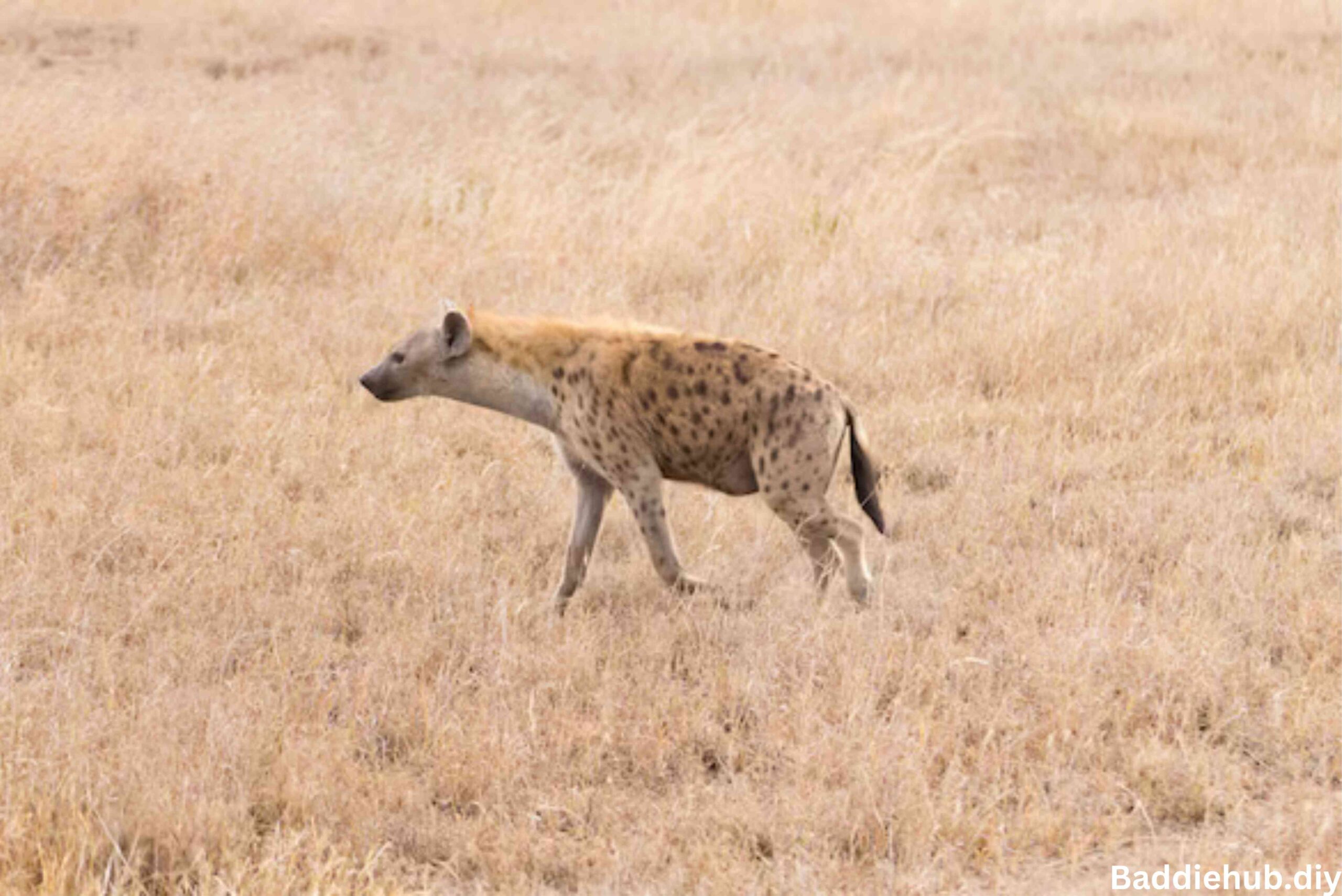The world of wildlife is full of surprises, and one of the most unusual occurrences that have caught the fascination of animal lovers and researchers alike is the Hanging Hyena phenomenon. While hyenas are typically known for their scavenging behaviors and social structure, there’s something utterly perplexing about the sight of these creatures hanging from trees. But why do they do this? And what does it reveal about their behavior and intelligence?
In this article, we’ll dive deep into the mysterious Hanging Hyena phenomenon. Along the way, we will explore the intriguing reasons behind this behavior, its implications for the animal kingdom, and what it tells us about hyenas and their place in the grand scheme of nature.
Introduction to the Hanging Hyena Phenomenon
The Hanging Hyena phenomenon is one of nature’s most baffling displays of animal behavior. Imagine walking through an African savannah and spotting a hyena, not scavenging or hunting, but hanging upside down from a tree like a bat. This odd sight has sparked curiosity among animal enthusiasts and researchers alike. It isn’t a myth or fictional story—it’s a real and fascinating behavior that invites a closer look at the species and its mysterious ways.
In this article, we’ll explore the reasons behind this intriguing behavior, its occurrence, and how it fits into the wider world of hyenas. So, what’s going on when we see a hyena hanging around like this?
Understanding Hyenas: More Than Just Scavengers
Before we delve into the specifics of the Hanging Hyena, let’s take a moment to understand hyenas as a species. Often misunderstood, hyenas have earned a reputation as mere scavengers. However, this is far from the whole story. Hyenas are complex creatures with rich social lives, impressive hunting skills, and unique behaviors that make them stand out in the animal kingdom.
There are four species of hyenas, with the most famous being the spotted hyena. They have powerful jaws that can crush bones, and they play a key role in the ecosystem as both hunters and scavengers. Despite their reputation, they are highly intelligent and social animals, often living in large clans.
Understanding these traits helps us appreciate their complex behavior, including the Hanging Hyena phenomenon. What we see in this behavior is just a small part of a much larger picture of hyena intelligence and social interaction.
What Is the Hanging Hyena Behavior?
The Hanging Hyena behavior refers to a scenario where a hyena, especially a juvenile or a young one, is seen hanging from a tree, often by its legs or claws. This act is surprising given that hyenas are typically ground-dwelling animals. While this behavior may seem odd or comical, there is a reason behind it.
In the wild, this behavior can often be seen during times of play or rest. Young hyenas may swing or hang from branches, which is a way to develop their motor skills or simply to have fun. It is essential to recognize that such behavior is not out of place in the animal kingdom; many species engage in similar activities, especially during their younger years.
Why Do Hyenas Hang From Trees?
You might be wondering, why would a hyena hang from a tree at all? The answer to this question lies in a combination of playful behavior and possibly even survival instincts. Here are some reasons:
1. Playful Behavior
Young hyenas are known for their playful nature, and hanging from trees is one way they explore and have fun. Much like how human children play on jungle gyms, young hyenas may use trees for climbing and hanging to hone their physical skills.
2. Seeking Shelter or Rest
In some cases, hyenas might climb trees to rest or escape predators. Although adult hyenas are less likely to climb trees, juveniles sometimes seek higher ground for safety.
3. Social Play
Hyenas are social animals, and hanging from trees can also serve as a form of social play. This behavior might help them bond with other members of the clan and learn social cues.
Is the Hanging Hyena Phenomenon Common?
While not every hyena engages in this behavior, it is not uncommon, especially among younger individuals. In fact, juvenile hyenas are more likely to be seen exhibiting this behavior, as they are still learning about their surroundings and developing their skills. Older hyenas, on the other hand, tend to focus more on hunting, socializing, and clan activities rather than hanging from trees.
However, when it does occur, the Hanging Hyena phenomenon becomes a memorable sight, drawing the attention of researchers and animal lovers.
The Role of Hanging in Hyena Communication
Hyenas are known for their complex communication methods, which include vocalizations, body language, and even scent marking. The act of hanging from a tree could play a role in this communication, especially among younger hyenas.
When a hyena hangs from a tree, it may be signaling to other members of the clan or engaging in a form of social bonding. It is possible that this behavior is part of their developmental phase, helping them interact and build relationships within their clan.
Hanging Hyenas: Are They Displaying Playful Behavior?
As mentioned earlier, the Hanging Hyena behavior is often a sign of playful behavior. Hyenas, especially the younger ones, are known for their boisterous and curious nature. Hanging from trees could simply be a fun activity, much like how puppies or kittens engage in playful antics.
This playfulness is essential for their development. Just like young humans play to learn about the world around them, young hyenas use play to refine their physical abilities, social interactions, and survival instincts.
The Social Structure of Hyenas: An Insight into Their Actions
Hyenas live in complex social groups called clans, and these clans are led by dominant females. The behavior of hanging from trees may not be directly tied to the hierarchical structure, but it could be a form of social play within the clan. It’s important to note that hyenas are highly social animals, and their interactions with each other can be quite complex.
The behavior of hanging might help young hyenas establish their place within the social fabric of the clan, learning from their peers and older members through various social activities.
Hyena Intelligence: Does Hanging Show Problem-Solving Skills?
Hyenas are incredibly intelligent animals. Some researchers believe that behaviors like the Hanging Hyena might demonstrate a degree of problem-solving ability. For instance, young hyenas might climb trees as part of learning how to navigate different terrains and escape potential threats.
The ability to think and solve problems is vital for survival, and hyenas, being opportunistic feeders, need to be quick-witted. The Hanging Hyena could thus be a sign of their growing intelligence and adaptability.
Other Animals That Hang From Trees: A Comparison
It’s not just hyenas that engage in hanging behavior. Many other animals, such as monkeys, sloths, and some species of cats, are also known to climb and hang from trees. These animals often use trees for various reasons: shelter, rest, hunting, or social play.
The difference between these species and hyenas lies in their physical adaptation to tree climbing. While some species are naturally arboreal, hyenas are primarily ground-dwelling creatures. The fact that hyenas occasionally engage in hanging behavior highlights their adaptability and the importance of trees in their environment.
The Myth of the “Laughing Hyena” and Hanging Behavior
When people think of hyenas, the first image that often comes to mind is their distinctive, “laughing” vocalization. But does this vocalization have anything to do with their Hanging Hyena behavior? Not directly.
The laughter-like sound hyenas make is a form of communication, often associated with excitement or distress. It is not connected to their physical behavior of hanging but is another example of their complex ways of interacting with the world.
How the Hanging Hyena Phenomenon Affects Ecosystem Dynamics
While the Hanging Hyena phenomenon may seem like an isolated oddity, it can have broader ecological implications. The actions of hyenas, from hanging in trees to scavenging or hunting, influence the dynamics of their ecosystem. They help control the populations of other animals and contribute to the overall balance of the food chain.
By participating in such behaviors, hyenas shape the environment in which they live, ensuring that various species maintain a natural equilibrium.
Lessons From the Hanging Hyena: What It Tells Us About Animal Adaptation
The Hanging Hyena phenomenon is a great example of how animals adapt to their environment. Hyenas, though primarily ground-dwelling, can adapt to new situations, learn new behaviors, and use their environment in creative ways.
This behavior teaches us about the versatility of animals and their ability to thrive in diverse environments. It’s a testament to their resilience and adaptability.
The Fascination of Hanging Hyenas in Popular Culture
The Hanging Hyena has also captured the imagination of popular culture, especially in documentaries and wildlife shows. Its strange behavior and unique character have made it an object of fascination for animal lovers and filmmakers alike.
As more people become aware of this phenomenon, hyenas are slowly shedding their negative image and gaining recognition for their fascinating behaviors.
Conclusion: The Mystery and Majesty of the Hanging Hyena
The Hanging Hyena phenomenon is a fascinating glimpse into the lives of these intelligent, social, and adaptable creatures. Whether it’s a sign of play, communication, or an important survival skill, this behavior sheds light on the complexity of hyenas and their role in the animal kingdom. The next time you hear about a Hanging Hyena, you’ll know that it’s more than just an oddity—it’s a peek into the vibrant, multifaceted world of hyenas.
Frequently Asked Questions (FAQs)
What is the Hanging Hyena behavior? The Hanging Hyena behavior refers to hyenas, especially younger ones, hanging upside down from trees, usually for play or exploration.
Why do hyenas hang from trees? Hyenas hang from trees primarily as a playful activity or to rest, often in an effort to develop their physical and social skills.
Are Hanging Hyenas common? While not seen every day, Hanging Hyenas are not rare, especially among juveniles. Adult hyenas generally avoid climbing trees.
What does hanging behavior tell us about hyenas? Hanging behavior demonstrates hyenas’ intelligence, social nature, and adaptability. It may help them develop motor skills or communicate with other hyenas.
Do other animals hang from trees? Yes, many animals like monkeys, sloths, and some big cats hang from trees, but hyenas are unique in that they are not naturally arboreal animals.





